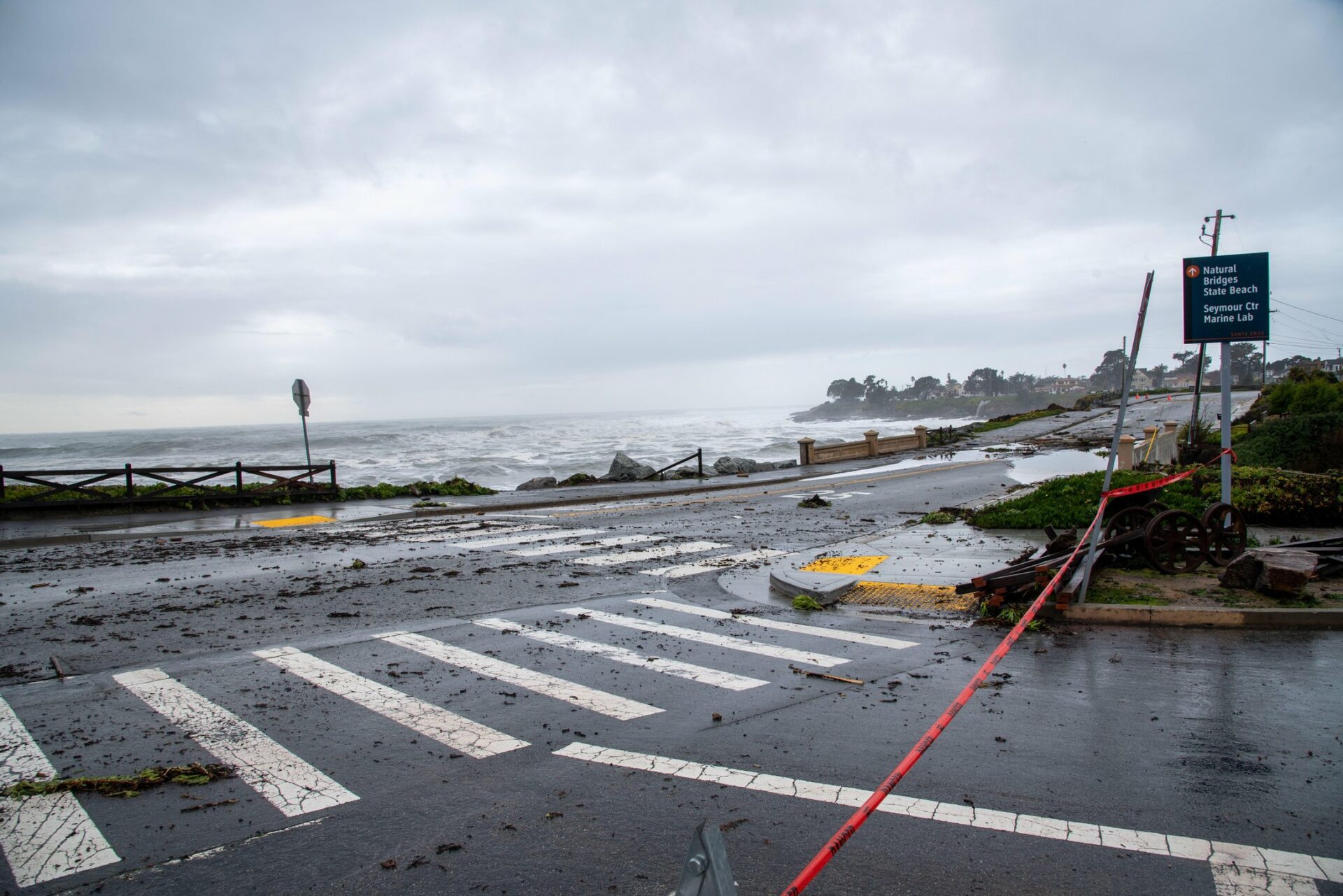California has been deluged by a relentless procession of storms this winter, bringing record breaking levels of rain and causing billions of dollars of damage.
But it’s not just rain causing harm. Plumes of harmful ozone can wash in on the wake of these storms, which can accelerate global warming and add to air pollution.
An interdisciplinary team of scientists, led by 2020 Schmidt Science Fellow Dr Kirsten Hall, has been investigating the movement of ozone associated with atmospheric rivers.
These 2,000km long conveyor belts of water vapor shift water from the tropics to the poles, and are responsible for intense rainfall events like those seen in California this winter.
The new study shows atmospheric rivers also shift ozone.
Most of the world’s ozone sits in the upper atmosphere and provides a protective blanket, absorbing ultraviolet radiation and shielding us from harmful solar rays.
Normally there is limited mixing between the upper and lower atmosphere, but atmospheric rivers disturb this boundary which often leads to the transport of ozone-laden air from the upper atmosphere into the lower atmosphere.
Once in the lower atmosphere ozone acts as a greenhouse gas, absorbing heat from the Earth’s surface and, at ground level, it is a dangerous air pollutant, harming the health of living things.
Dr Hall and her colleagues analyzed 11 years worth of data from atmospheric rivers arriving on the US West Coast in December between 2004 and 2014.
Their findings, published in the Journal of Geophysical Research Atmospheres, found that the atmospheric rivers pummeling the US West Coast were responsible for around 13% of the total flux of ozone between the upper and lower atmosphere in the northern hemisphere, rising to around one third of the total flux when all northern hemisphere atmospheric rivers are taken into account.
Climate models indicate that atmospheric rivers will become up to 25% more intense and as much as 50% more frequent in the future, suggesting that the problems associated with ozone in the lower atmosphere will grow.
The new data will help to improve climate models and could also help better protect people from the damaging effect of air pollution when ozone makes landfall.

“Currently we don’t assess the ozone flux associated with atmosphere river events, but this study shows that we should be following up on events like those that have hit California this winter, measuring the ozone flux and monitoring the air quality on the ground, to give people advance warning,” says Dr Hall.
Such findings are a long way from Dr Hall’s original area of study, in extra galactic astrophysics, but her ability to think expansively and grapple with large datasets has proven invaluable.
“As an undergraduate, I really didn’t know what I wanted to do and didn’t have a lot of context for what different career paths in science could look like; I’m a first-generation college student, and I was just diving in and figuring it out on my own,” explains Dr Hall.
She discovered astronomy and fell in love with it as a discipline, but also had a long-standing interest in Earth and climate science. That interest didn’t go away.
Through the Schmidt Science Fellowship, Dr Hall had the opportunity to take an interdisciplinary approach.
She pivoted from astrophysics to climate science to apply her skills to problems closer to home.
“I’m so happy that I applied because it has enabled me to put my scientific expertise towards tackling this global challenge that humanity is facing right now,” says Dr Hall.



